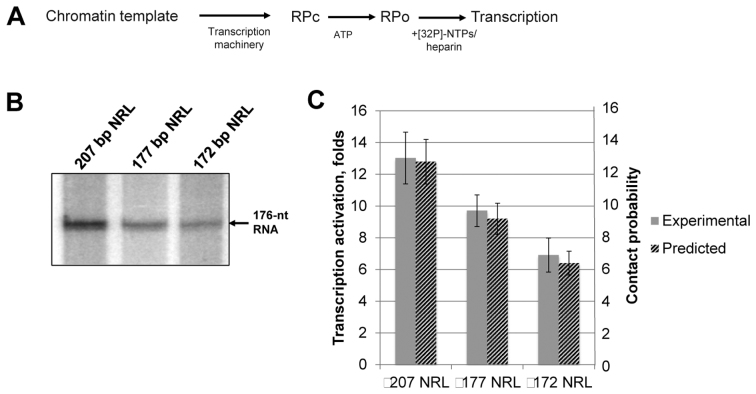Figure 3.
Increase in the length of the internucleosomal linker DNA results in more efficient EPC in chromatin. (A) Experimental approach for analysis of the rate of EPC in chromatin. Closed initiation complexes of RNA polymerase formed on the promoter (RPC) were converted to the open initiation complexes (RPO) after addition of ATP for a limited time period, followed by addition of NTPs and heparin to limit transcription to a single round and to remove the nucleosomal barrier to transcription. The efficiency of transcription is directly proportional to the rate of EPC (16). (B) Transcription of 13-nucleosome arrays with 207-, 177- and 172-bp NRL. Analysis of labeled transcripts by denaturing PAGE. The rates of transcription activation (units on the left of the plot) were measured as described in Figure 3A. (C) Quantitative analysis of the 176-nt transcripts (gray bars) shown in Figure 3B. Error bars indicate standard deviations based on four independent measurements using two different reconstitutes (see Supplementary Table S2 for the results of t-test). Computational likelihood of long-range enhancer–promoter contacts (normalized to the values for histone-free DNA) are shown on the same plot. The contact probabilities (units on the right of the plot) correspond to the ratios of the computed probabilities that nucleosome-saturated and nucleosome-free DNA constructs of the specified composition adopt configurations that bring transcriptional proteins on the enhancer and promoter into close contact.

